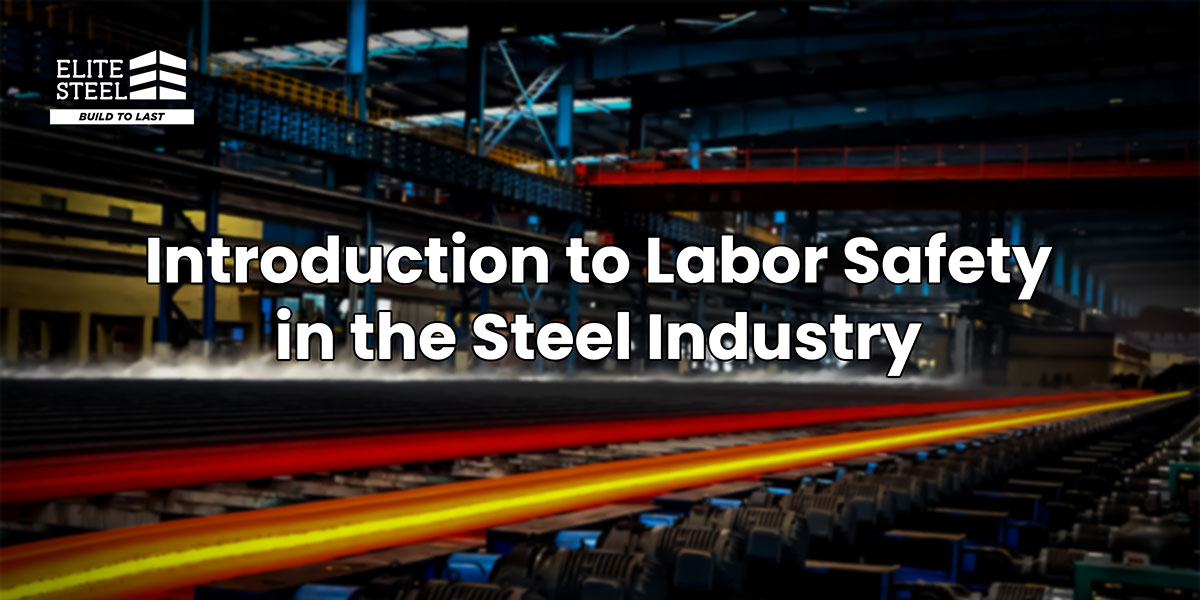Introduction to Labor Safety in the Steel Industry in Bangladesh
The steel production industry is a backbone of Bangladesh’s economic growth, but it comes with significant risks to laborers working in hazardous conditions. Ensuring labor safety is essential to protect workers from injuries and accidents while maintaining production efficiency.
Importance of Labor Safety in Bangladesh’s Steel Sector
Rapid Growth of the Steel Industry in Bangladesh
In recent years, Bangladesh has seen rapid growth in its steel production capabilities. As urbanization and infrastructure development increase, the demand for steel products has skyrocketed. However, this rapid growth has also exposed workers to more risks, highlighting the importance of labor safety measures.
High-Risk Factors in Steel Production
Steel production involves numerous dangerous processes, including handling molten metal, operating heavy machinery, and working in high-temperature environments. These factors make labor safety a critical concern.
Global Standards and Safety Regulations in the Steel Industry
Many countries have implemented strict safety regulations in their steel industries. These include guidelines on the use of personal protective equipment (PPE), safety training, and regular inspections of machinery and plants. Bangladesh must align its regulations with global standards to enhance labor safety.
Understanding the Risks in Steel Production
Common Hazards Faced by Workers
Physical Hazards
Workers in the steel industry face physical hazards such as burns, cuts, and crush injuries from heavy machinery and sharp metal edges.
Chemical Hazards
Exposure to hazardous chemicals like asbestos, lead, and metal dust can cause long-term health issues, including respiratory problems and cancer.
Environmental Hazards
Working in poorly ventilated environments or extreme temperatures poses additional risks, such as heat exhaustion or respiratory distress from dust and fumes.
Case Studies of Accidents in the Steel Industry
International Examples
In 2019, a steel plant explosion in China led to the death of dozens of workers due to unsafe working conditions. This incident emphasized the need for global attention to steel plant safety.
Local Incidents in Bangladesh
Unfortunately, similar incidents have occurred in Bangladesh, where laborers faced life-threatening injuries due to inadequate safety protocols and outdated equipment.
Current Safety Measures in Bangladesh
Existing Policies and Regulations
Bangladesh has labor laws intended to protect workers, but the enforcement of these regulations in the steel industry has been inconsistent.
Challenges with Implementation
Lack of Proper Enforcement
Despite existing regulations, many steel factories fail to adhere to safety guidelines due to a lack of monitoring and penalties.
Insufficient Worker Training
Many workers are not adequately trained to handle machinery or respond to emergencies, increasing the likelihood of accidents.
Importance of Worker Training and Awareness
Regular Safety Drills
Conducting regular safety drills can prepare workers for emergencies and help them react quickly in dangerous situations.
Educating Workers on Equipment and Safety Gear
Use of Personal Protective Equipment (PPE)
PPE, such as gloves, helmets, and safety goggles, is vital for protecting workers from injuries. However, many workers in Bangladesh’s steel plants do not have access to or do not use this equipment regularly.
Handling Heavy Machinery
Proper training on how to operate heavy machinery is crucial to prevent accidents like crushing injuries or machinery malfunctions.
Role of Government in Enhancing Safety
Developing Safety Regulations
The Bangladeshi government must work closely with steel industry leaders to develop stricter safety regulations that reflect international standards.
Providing Funding for Safety Programs
Government funding can support safety initiatives, including the provision of PPE and the installation of advanced safety systems.
Monitoring and Auditing Steel Plants
Regular audits and inspections by government agencies can ensure that safety protocols are followed consistently.
Technology and Innovation in Improving Safety
Automation in Steel Manufacturing
Automation can reduce the need for human labor in hazardous areas, lowering the risk of accidents and injuries.
Advanced Monitoring Systems
Use of IoT and AI for Hazard Detection
The integration of IoT (Internet of Things) and AI (Artificial Intelligence) technologies can help detect hazardous conditions in real time, preventing accidents before they occur.
Creating a Culture of Safety in the Workplace
Leadership’s Role in Safety
Leadership within steel plants must prioritize safety by setting clear policies and ensuring that all employees understand and follow them.
Involving Workers in Safety Planning
Workers should be involved in safety discussions and planning, as they are the ones facing the risks on the ground.
Future Outlook for Safety in Bangladesh’s Steel Industry
Adopting New Technologies
To improve safety, Bangladesh’s steel industry needs to invest in new technologies, including automation and real-time hazard detection systems.
Collaborating with International Safety Experts
Collaboration with international experts can provide Bangladesh with the knowledge and tools needed to improve labor safety in its steel industry.
Conclusion
Ensuring labor safety in Bangladesh’s steel production industry requires a combination of government regulation, technological advancements, and worker training. Urgent action is needed to align with global standards and protect the lives of those working in this high-risk sector.
FAQs
What are the most common accidents in steel production?
Common accidents include burns, crush injuries, and exposure to hazardous chemicals, all of which can be life-threatening if proper safety measures are not followed.
How can companies ensure the safety of their workers?
Companies can ensure safety by providing PPE, conducting regular safety drills, and offering extensive training on machinery and emergency response.
What role does the government play in labor safety?
The government is responsible for creating regulations, monitoring steel plants, and enforcing penalties for non-compliance to ensure safe working conditions.
How can technology help reduce risks in steel plants?
Technology, such as automation and AI-driven monitoring systems, can help detect hazards and prevent accidents, making the workplace safer for human laborers.
What can workers do to protect themselves from workplace hazards?
Workers should always wear PPE, follow safety protocols, and report any unsafe conditions to their supervisors immediately.


